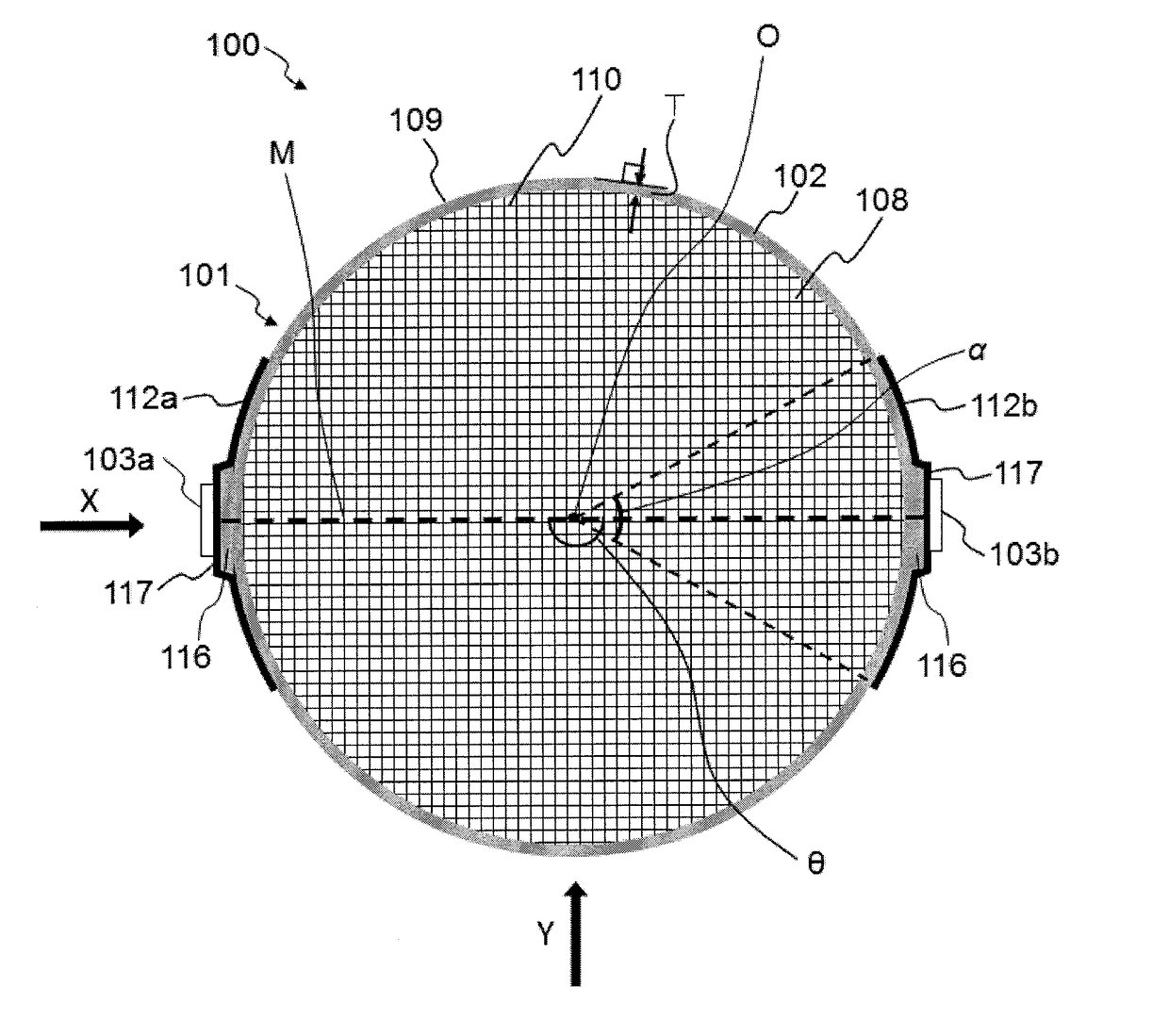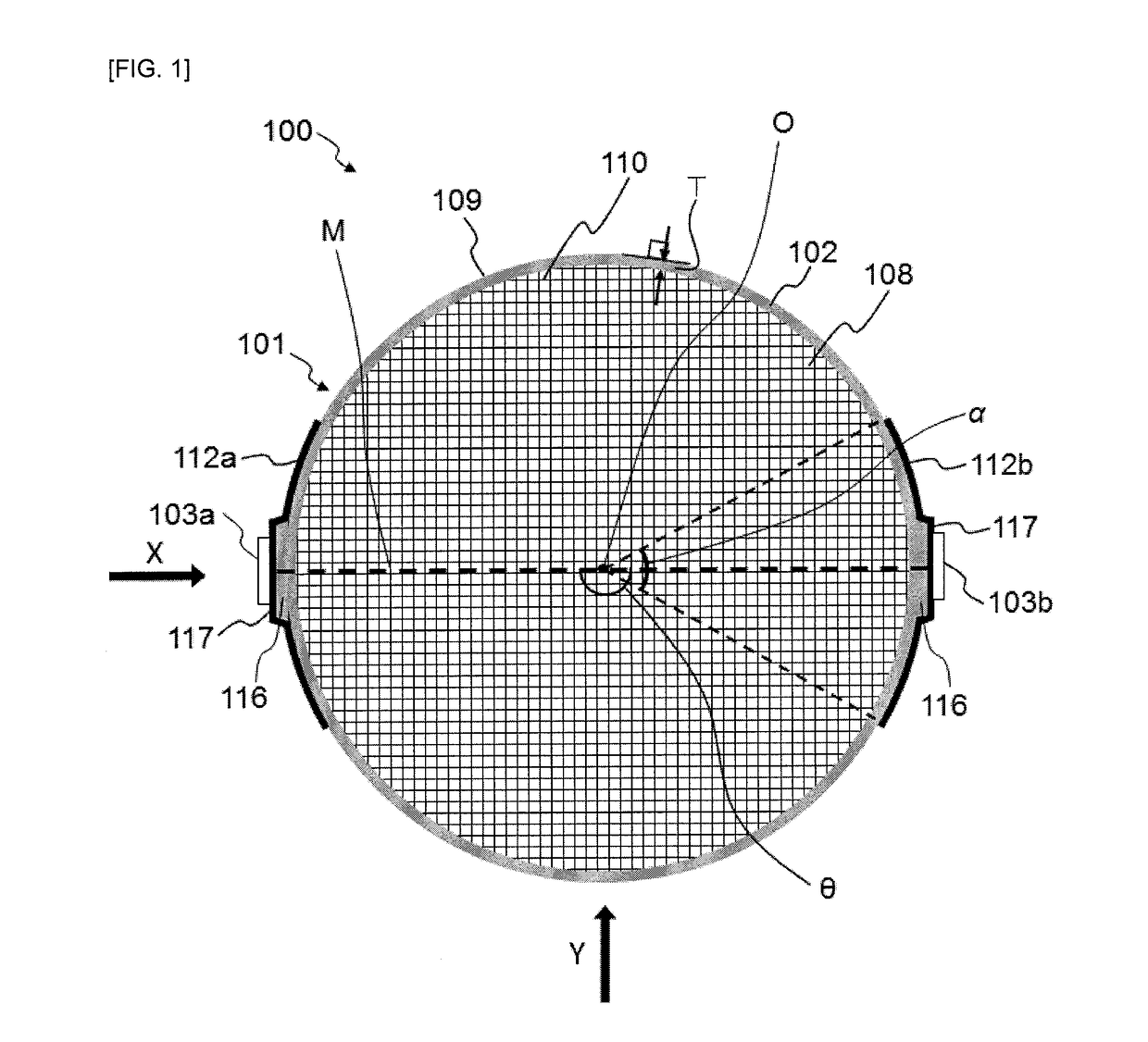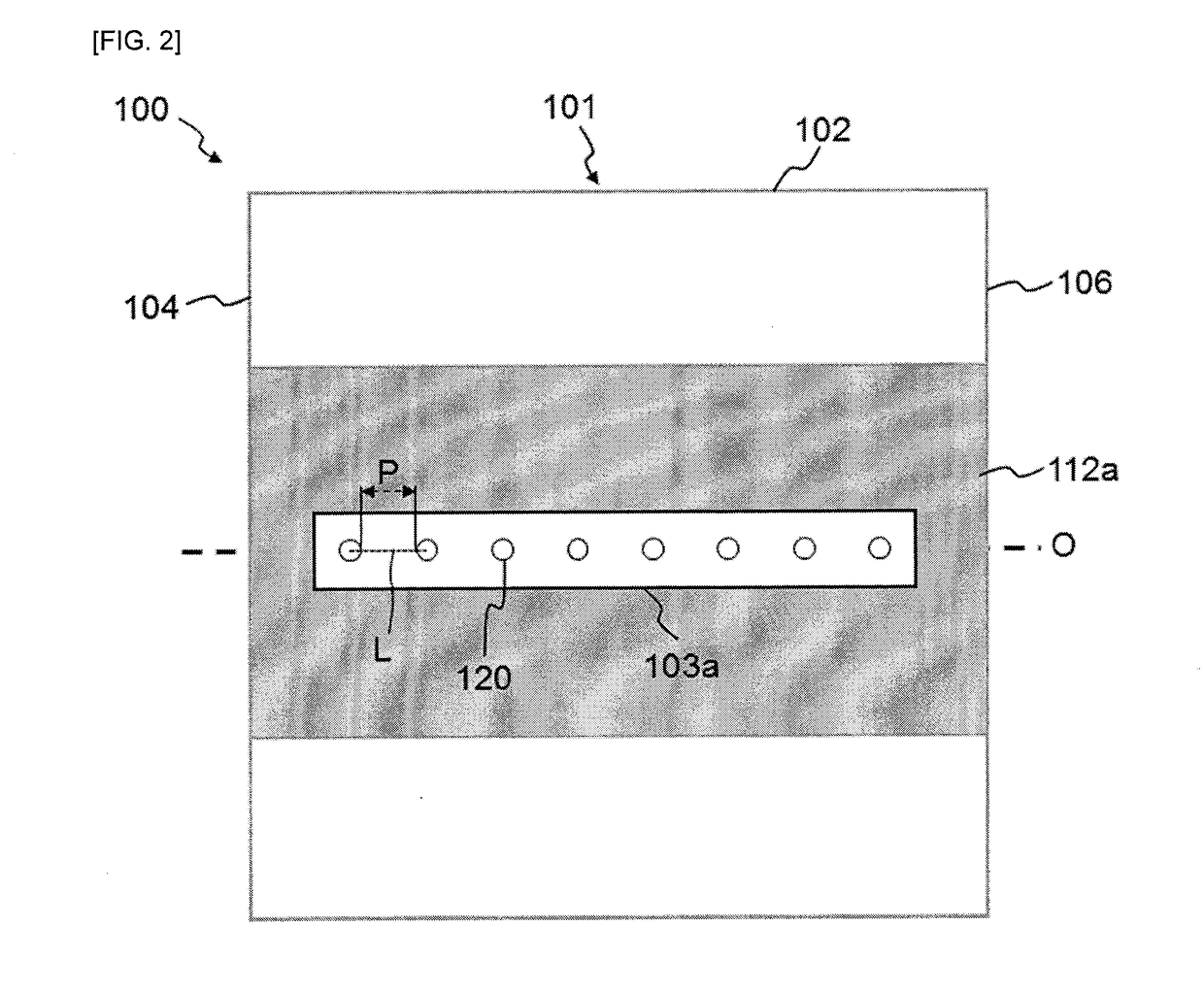Conductive honeycomb structure
- Summary
- Abstract
- Description
- Claims
- Application Information
AI Technical Summary
Benefits of technology
Problems solved by technology
Method used
Image
Examples
example 1
[0086](1. Preparation of Columnar Green Body)
[0087]A ceramic raw material was prepared by mixing silicon carbide (SiC) powder and metallic silicon (Si) powder at a mass ratio of 80:20. To the ceramic raw material were added hydroxypropylmethyl cellulose as a binder and a water absorbing resin as a pore former, as well as water, to form a molding material. The molding material was then kneaded by a vacuum green body kneader to prepare a cylindrical green body. The content of the binder was 7 parts by mass when the total amount of silicon carbide (SiC) powder and metallic silicon (Si) powder was 100 parts by mass. The content of the pore former was 3 parts by mass when the total amount of silicon carbide (SiC) powder and metallic silicon (Si) powder was 100 parts by mass. The content of water was 42 parts by mass when the total amount of silicon carbide (SiC) powder and metallic silicon (Si) powder was 100 parts by mass. The mean particle diameter of silicon carbide powder was 20 μm a...
examples 2 to 19
, Comparative Examples 1 to 3
[0113]A honeycomb dried body was prepared in the same procedure as in Example 1. Preparation of an electrode layer forming paste, application of the electrode layer forming paste, firing and welding of metal terminals were then carried out by the same procedure as in Example 1 to produce a honeycomb structure provided with the metal terminals, with exception that the electrode layer conditions and the welding conditions were changed to those shown in Table 1 according to the test numbers.
[0114]The linear coefficient of thermal expansion (CTE) of the second electrode layer was adjusted by changing the content ratios of chromium silicide (CrSi2) powder and metallic silicon (Si) powder. The coefficient of thermal expansion is raised by increasing the content ratio of CrSi2, and conversely it is reduced by decreasing the content ratio of CrSi2, as compared with Example 1.
example 20
[0115]An unfired honeycomb structure portion with an electrode layer forming paste was obtained in the same method as in Example 1, with the exception that the volume ratios of TaSi2 powder, Si powder and SiC powder in the first electrode layer forming paste were changed to TaSi2 powder:Si powder:SiC powder=40:40:20, and the thickness of the first electrode layer was changed as shown in Table 1, and the second electrode layer was not formed. The unfired honeycomb structure portion with the electrode layer forming paste was then degreased, fired and oxidized under the same conditions as in Example 1 to obtain a honeycomb structure. Laser welding was performed on the first electrode layer under the conditions as shown in Table 1 by the same procedure as in Example 1 to produce a honeycomb structure provided with metal terminals, with the exception that the material of the metal terminals was changed to Invar® (Fe—Ni alloy).
[0116]The honeycomb structure provided with the metal terminal...
PUM
| Property | Measurement | Unit |
|---|---|---|
| Pressure | aaaaa | aaaaa |
| Area | aaaaa | aaaaa |
| Area | aaaaa | aaaaa |
Abstract
Description
Claims
Application Information
 Login to View More
Login to View More - R&D
- Intellectual Property
- Life Sciences
- Materials
- Tech Scout
- Unparalleled Data Quality
- Higher Quality Content
- 60% Fewer Hallucinations
Browse by: Latest US Patents, China's latest patents, Technical Efficacy Thesaurus, Application Domain, Technology Topic, Popular Technical Reports.
© 2025 PatSnap. All rights reserved.Legal|Privacy policy|Modern Slavery Act Transparency Statement|Sitemap|About US| Contact US: help@patsnap.com



